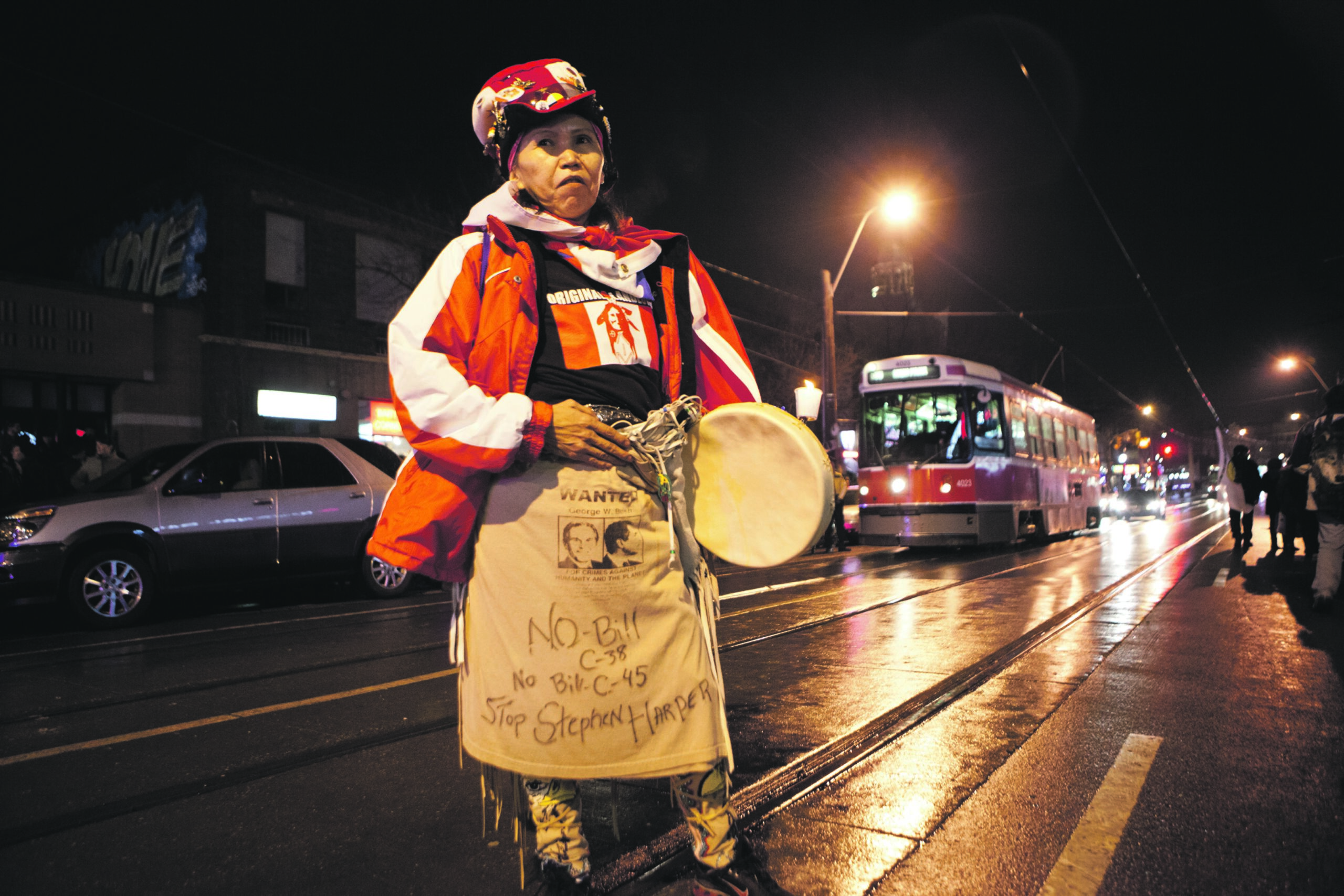
HG Watson
Editor-in-Chief
On a cold, windy day in late December, approximately 30 people are gathered at the Speaker’s Corner at King and Frederick Streets in Kitchener. They’re intently listening to a blessing led by a local First Nations leader.
Drums beat along as he passionately tells the crowd what Idle No More is about. “[People] want to know what our people are fighting for.”
The chill is most keenly felt by Miigizi Miigwan Kwe, one of the organizers of the protest. For the past 15 or so hours she has gone hungry, staging her own 24-hour hunger strike in support of Chief Theresa Spence, the headline-making leader of Attawapitkat First Nation in Northern Ontario.
Kwe spent the night in front of Kitchener City Hall, hoping to bring attention to a protest movement that has captured the attention of Waterloo Region and the rest of Canada. “We had a bit of ignorance last night with people yelling profanities from cars … if we can get out and tell people what’s going on maybe they’ll listen.”
Since the Idle No More hashtag sprang up on Twitter feeds nationally in early December, Canada has found itself in the midst of another mass protest movement just months after the climax of the Maple Spring. Rooted in protest against proposed amendments to the Indian Act, the Navigation Protection Act and the Environmental Assessment Act, the movement has come to represent resistance to what First Nations see as the many injustices against their community.
On a much warmer day in January, Kandice Baptiste is overseeing the weekly soup lunch at the Aboriginal Student Centre at Wilfrid Laurier University. As the university’s Aboriginal student recruitment and retention officer, her job runs the gamut of possible problems an Aboriginal student may face on campus, from academic problems to homesickness.
“The biggest challenge that they face is culture shock — they don’t see themselves reflected here,” she said.
The lone Aboriginal student in a class may be singled out to speak for all First Nations people— a daunting task, considering the number of bands and people right across the country.
It’s a problem that’s reflected in the media portrayal of Idle No More and the First Nations community at large. Four Saskatchewan First Nations women coined Idle No More when they decided to protest Bill C-45, a bill that would, amongst many other changes, get rid of waterways protections for 99 per cent of Canadian lakes and rivers and change the terms under which bands can surrender treaty territory.
But as Idle No More began to make waves on social media networks, it came to mean many things to many people.
“For on-reserve people they would say it’s a lot about land surrender and their treaty rights,” said Baptiste. Human rights, environmental rights and democratic rights are all on the table.
It makes sense then, that Idle No More has gained comparisons to the Occupy movement, another far-reaching protest that encompassed several issues. Both have made use of social media to bring their message to the masses.
“What is amazing about Idle No More is that there are thousands of people on Twitter and Facebook that read these articles and respond in unique and intelligent ways,” said Hayden King, a lecturer at McMaster University specializing in the representation of Indigenous peoples in media.
For him, media that once may have gotten away with stereotyping the movement, are now being held accountable by the citizens monitoring the Fourth Estate via Twitter and Facebook.
The comparisons to Occupy do not end at the use of social media. Idle No More claims no leadership. Individual communities and organizers are free to protest as they wish and when they wish.
Yet more organized days of protest have come about. On Jan. 11 the first international Idle No More day of protest is being promoted, which speaks to the reach these three little words have.
King believes that Idle No More also sets itself apart from activism of the past in tone, which he calls “spontaneous, celebratory and welcoming.”
Baptiste views Idle No More as a positive movement.
“I read once that our protests are really gifts … that our creators gave to us to perform so by doing them we’re gifting Canadians with our ceremonies and dances,” she said.




Leave a Reply